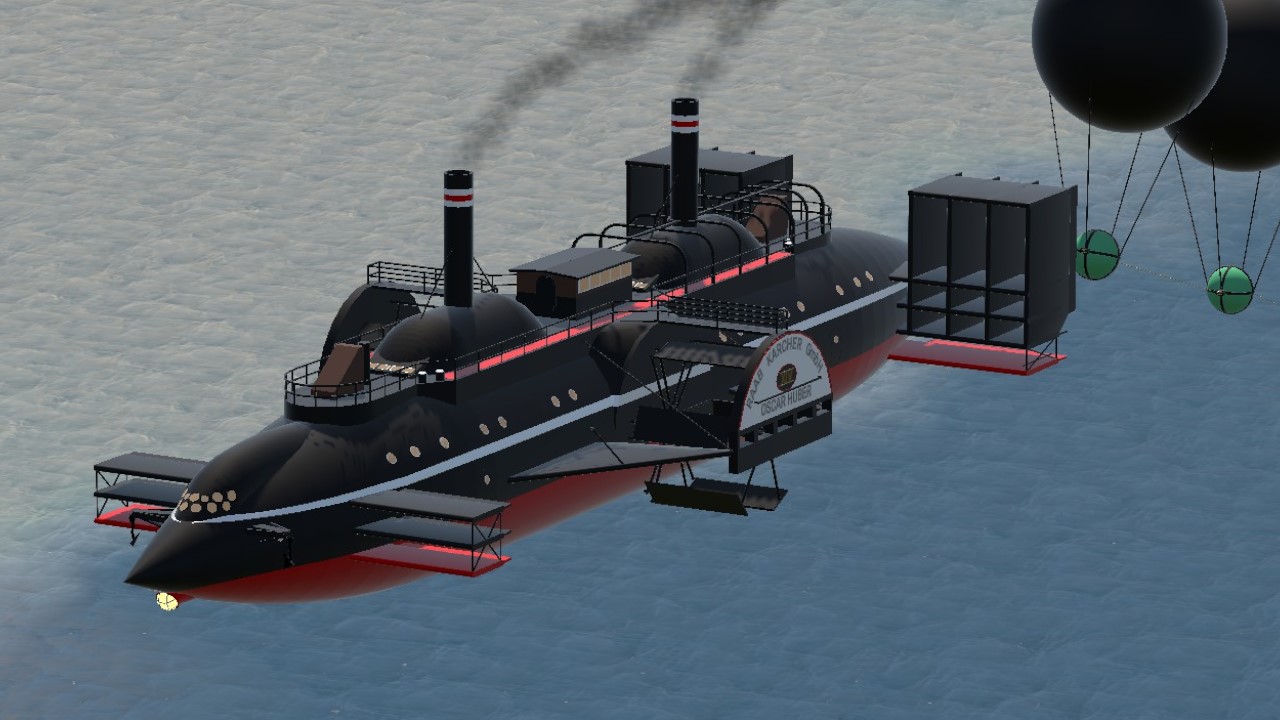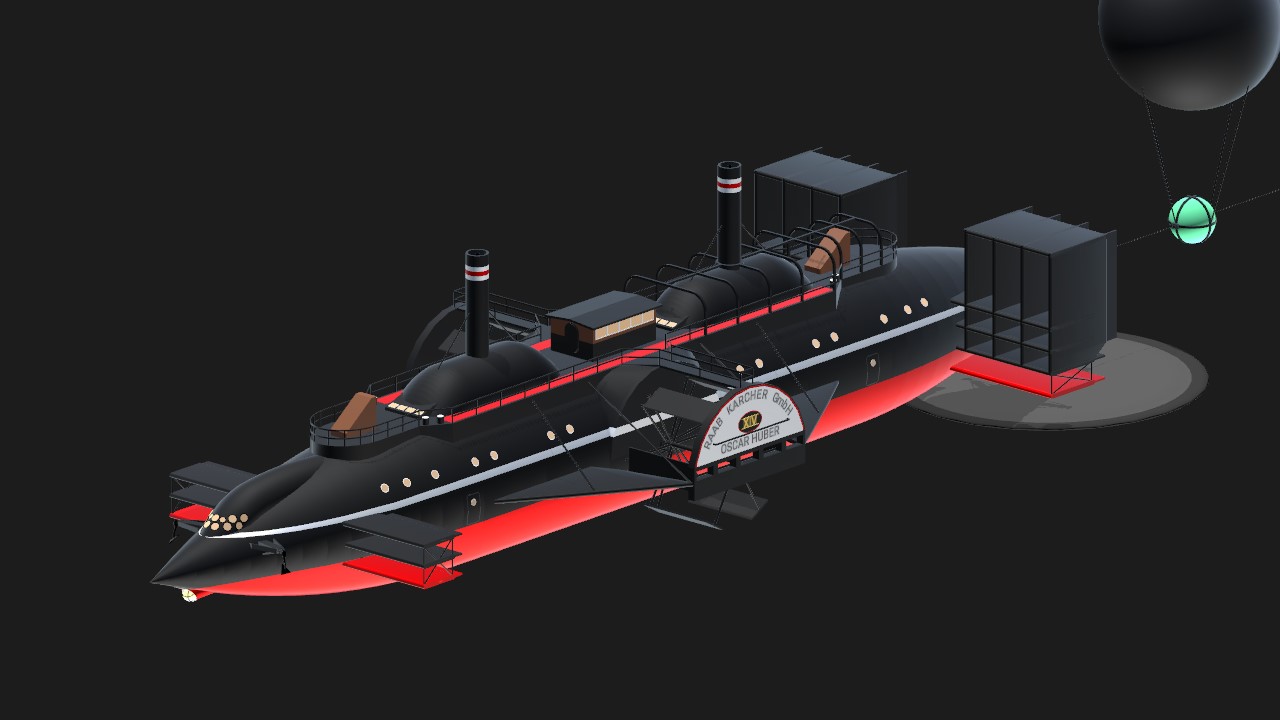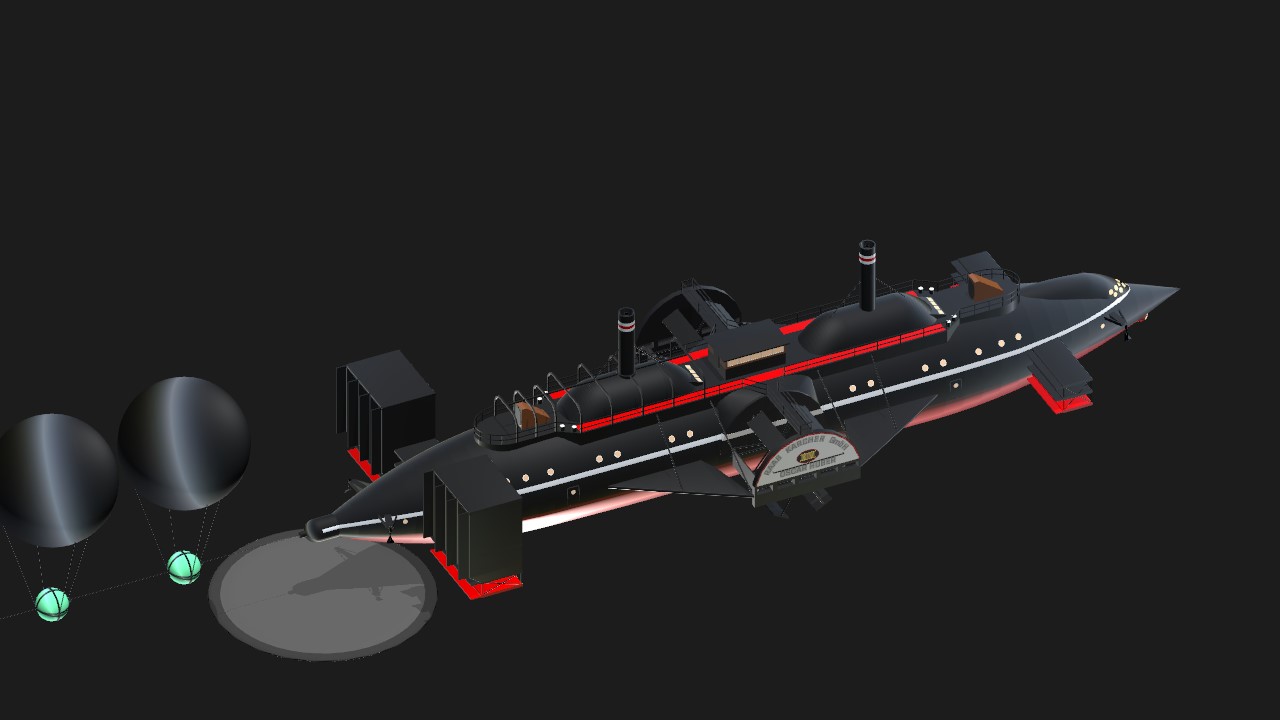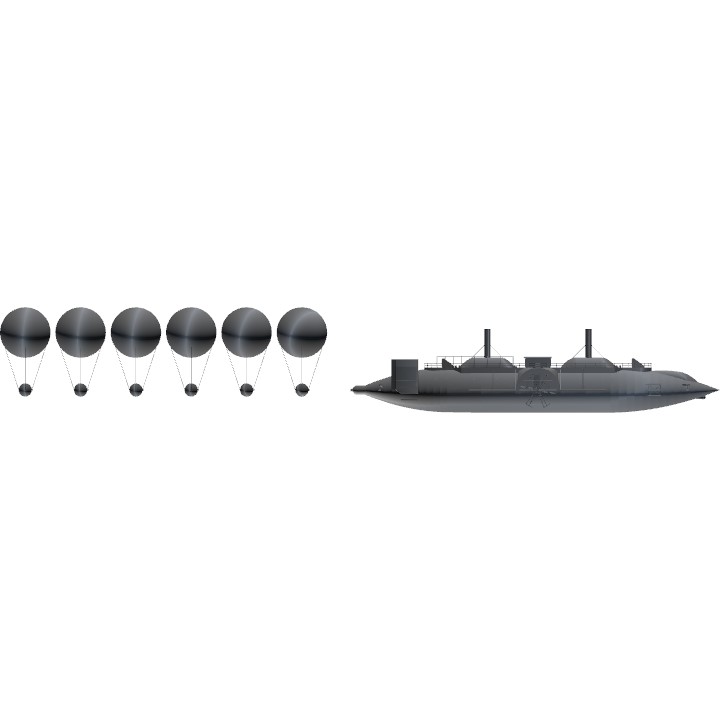This side rotor aerial Towboat was built in the shipyard Berninghaus in cologne from 1921 to 1922 for H.P. Disch in Duisburg-Ruhrort, as a direct result from the Suspendium boom of the early 1900's.
As the 8th ship for the company H.P. Disch, under the name of Wilhelm Von Oswald, she would be used to tow cargo balloons and aerial barges full of ore to processing plants, mainly for suspendium. With the whole tow-train consisting of up to 7 aerial barges, or 15 balloons. Trials were able to prove that up to 40 balloons were possible, but these werent used in action due to the large trailing line severely limiting the maneuverability of the airship.
Wilhelm von Oswald in 1922, about two months after being launched, held in a mobile airship clamp, waiting for cargo to be attached to her towing hardpoint.

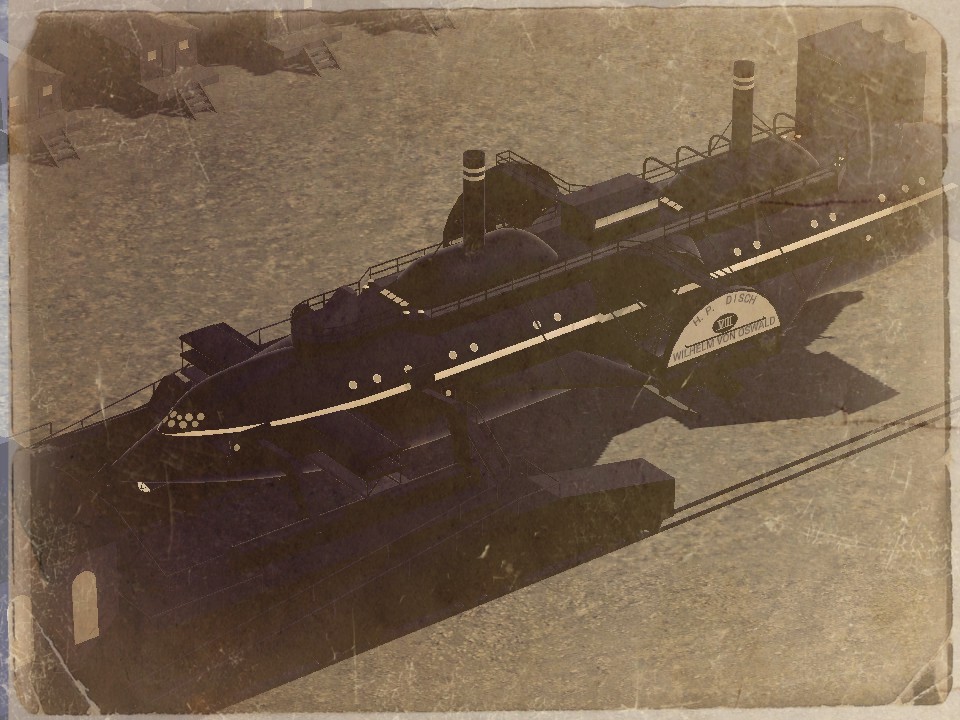
Some time after, the company H.P. Disch went bankrupt, and the airship was aquired by Raab Karcher. Renamed to Fritz Thyssen in 1927, as the 14th airship of their fleet, she continued to haul suspendium and other various ores from mines to processing plants all over the rhineland and the eastern netherlands, with her main route being Duisburg to Rotterdam.
Fritz Thyssen hauling Suspendium Ore Balloons, photographed by a passing airship, summer 1930.

Renamed to Oscar Huber in 1940, she continued towing operations as usual, with the addition of towing military barges from time to time.
Oscar Huber pictured with two aerial barges in spring of 1941, presumably carrying military supplies.

In March of 1945 she was scuttled by her own crew after receiving the order from the military.
She was raised again in 1946 and returned back to service with minor repairs in 1947.
Oscar Huber in 1946, prior to being raised.
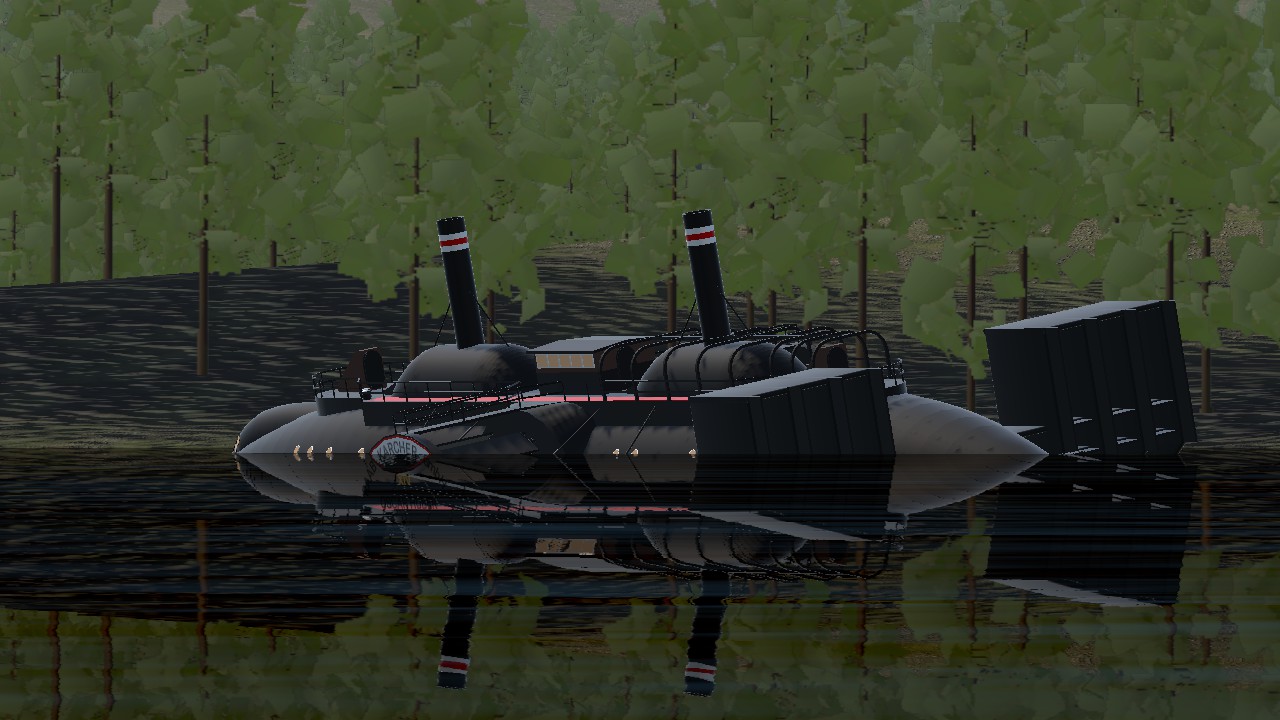
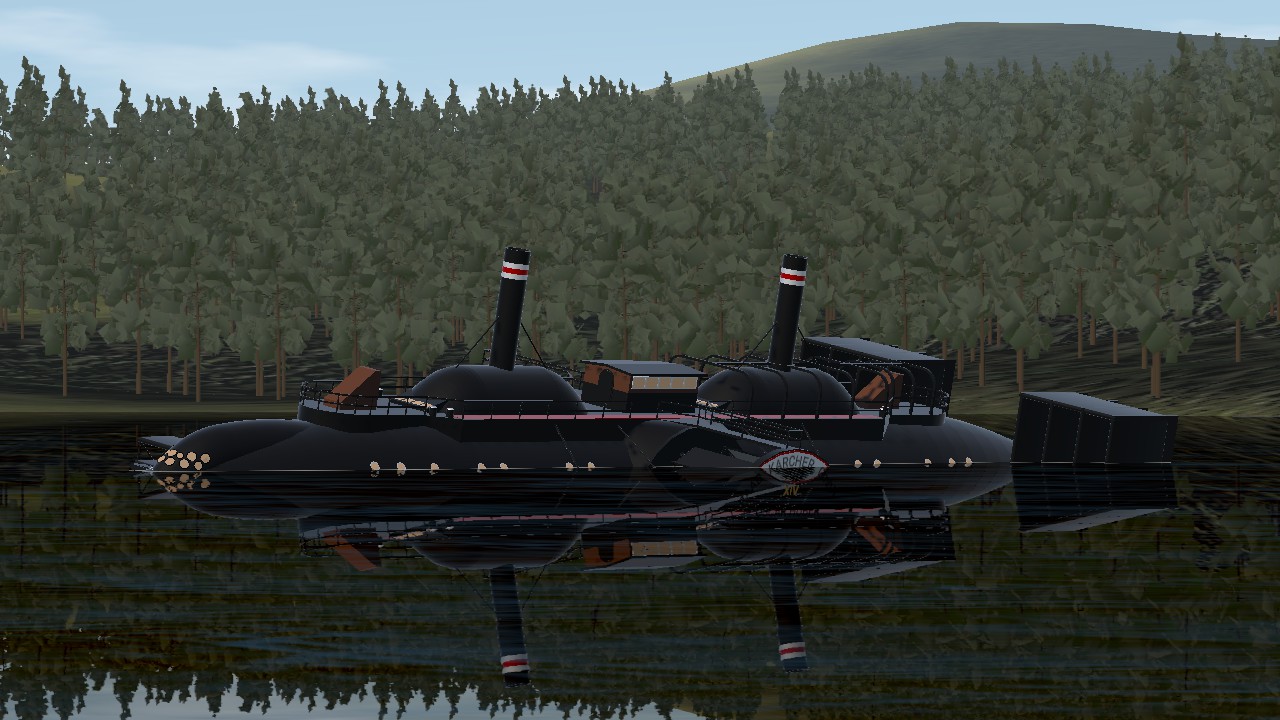
In the following years, the number of sidewheel aerial towboats drastically decreased. Despite being upgraded from coal to oil as fuel, the operation of Oscar Huber proved to be too complicated. With her last tow taking place in 1966.
A Club was founded in 1968 with one goal, to preserve the ship for generations to come. With minor cooperation from the company Raab Karcher, the club was able to use her as a passenger ship with a max capacity of 150 passengers. This way, they were able to keep the ship operating for three more years.
Oscar Huber in 1969.
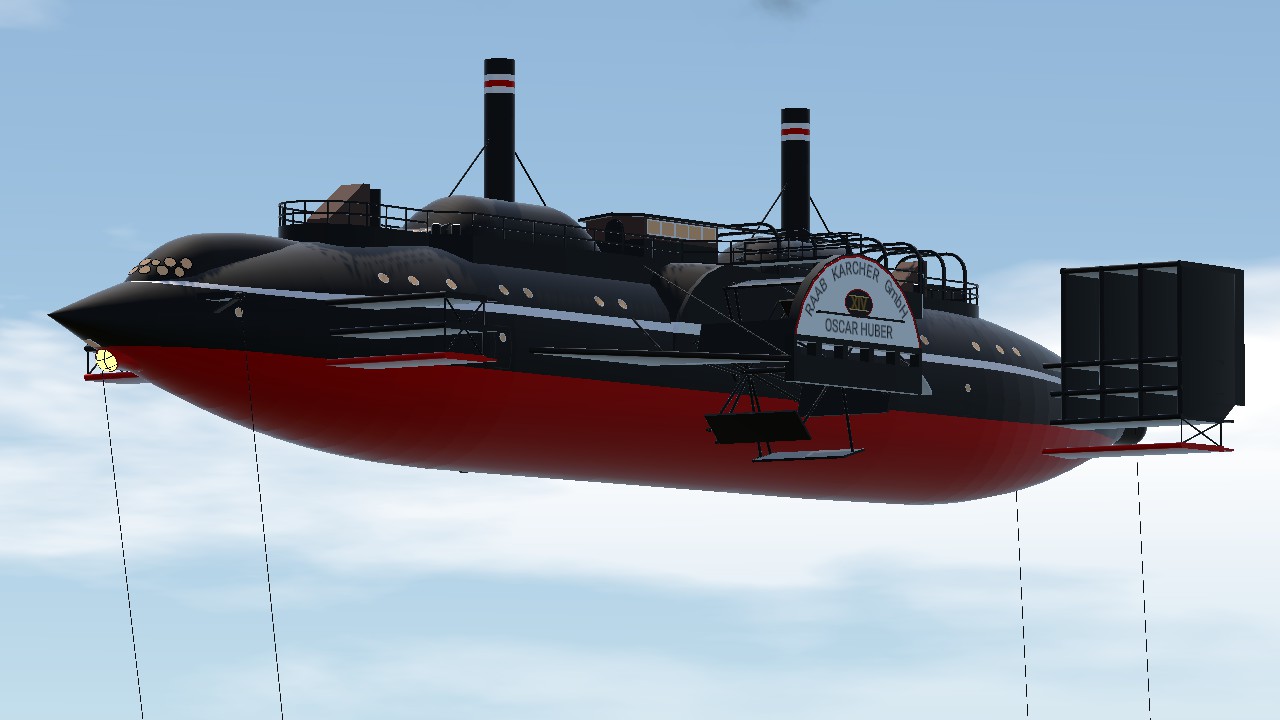
The operating costs quickly depleted the Club of its financial resources, so that scrapping ultimately seemed unavoidable in the end.
Thanks to public, and somewhat political effords, the ship became property of the city of Duisburg on October 1st 1971. After expensive repairwork and rebuilding in her home shipyard Berninghaus, she was towed to Duisburg-Ruhrort in 1973. Where she'd be permanently moored close to the main administration building of the harbour.
Oscar Huber being towed to her final resting place.
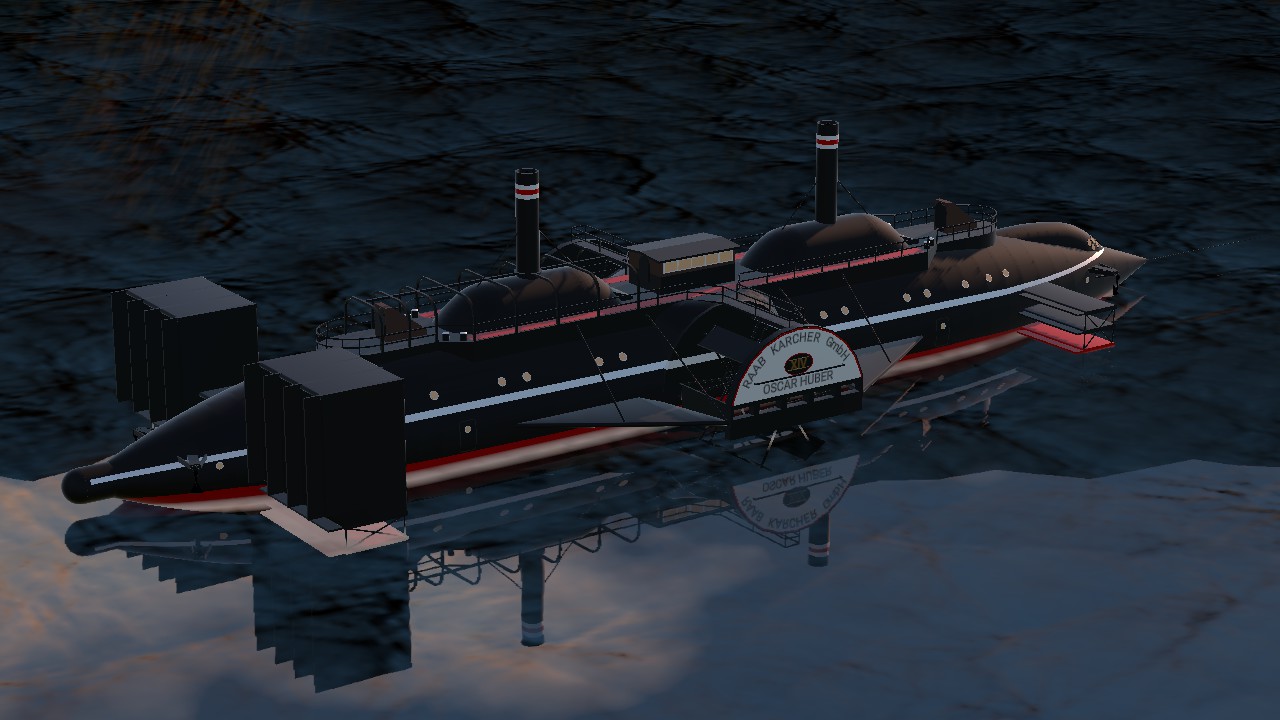
The first Airship- and Maritime Museum of Duisburg was finally opened aboard the Oscar Huber on the 19th of May 1974.
With the opening of the Maritime Museum Duisburg-Ruhrort on the 25 of May 1979, she lost her independence and became integrated into the museum.
The ship remained moored at a normal boat dock to this day, as part of the museums exhibition, and celebrated its 100th birthday in 2021.
Inspired by the real life paddle steamer Oscar Huber
Specifications
General Characteristics
- Predecessor Airship Challenge CLOSED
- Created On Windows
- Wingspan 69.9ft (21.3m)
- Length 467.1ft (142.4m)
- Height 68.4ft (20.9m)
- Empty Weight 302,182lbs (137,068kg)
- Loaded Weight 302,901lbs (137,393kg)
Performance
- Power/Weight Ratio 1.394
- Wing Loading 45.4lbs/ft2 (221.8kg/m2)
- Wing Area 6,668.2ft2 (619.5m2)
- Drag Points 13756
Parts
- Number of Parts 1238
- Control Surfaces 22
- Performance Cost 4,127
Required Mods
-
Smoke Trails
by NathanMikeska
Version 1.1 (1/11/2022 7:17:28 PM)
View Mod Page
View Mod on Steam Workshop

